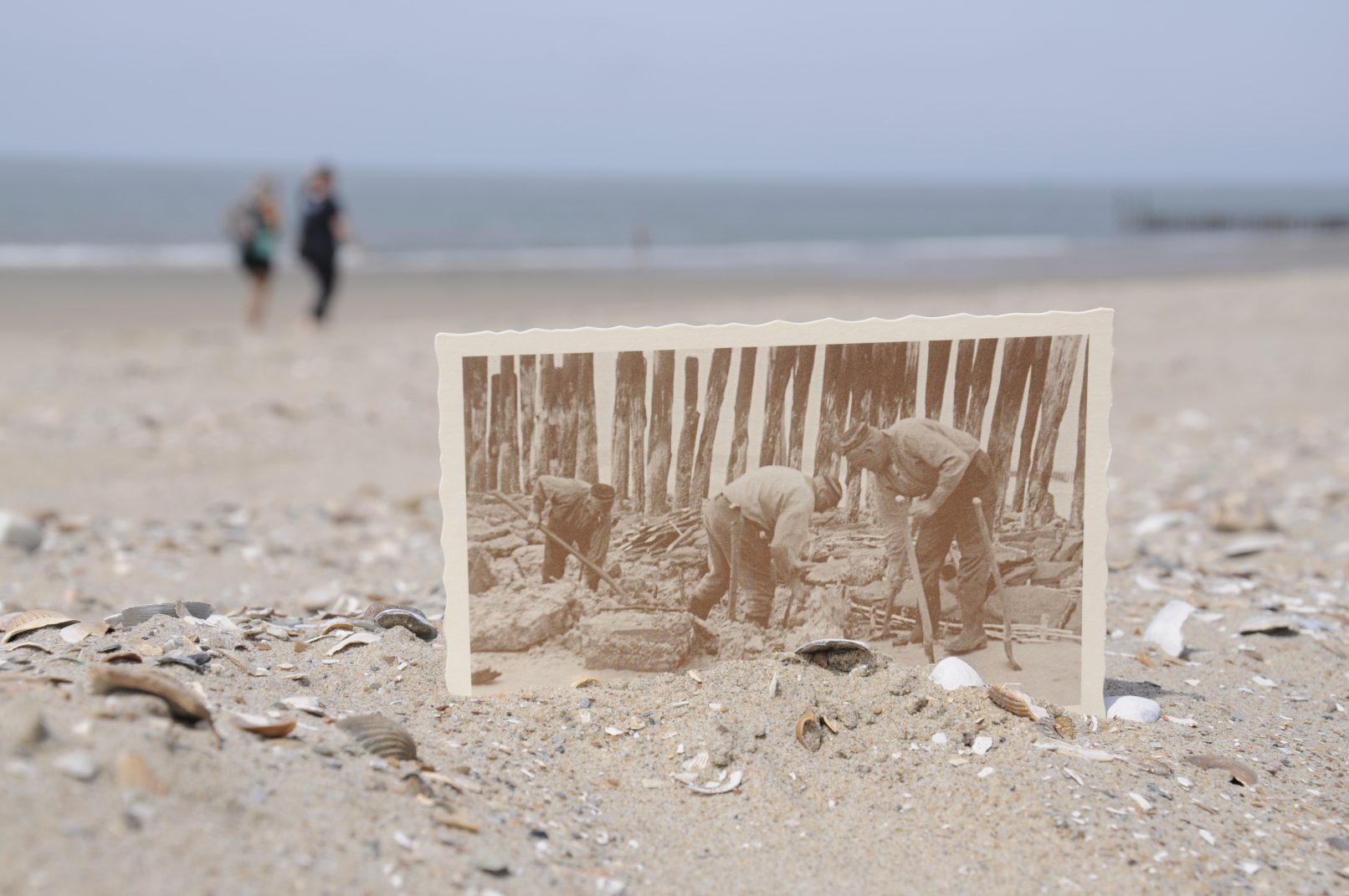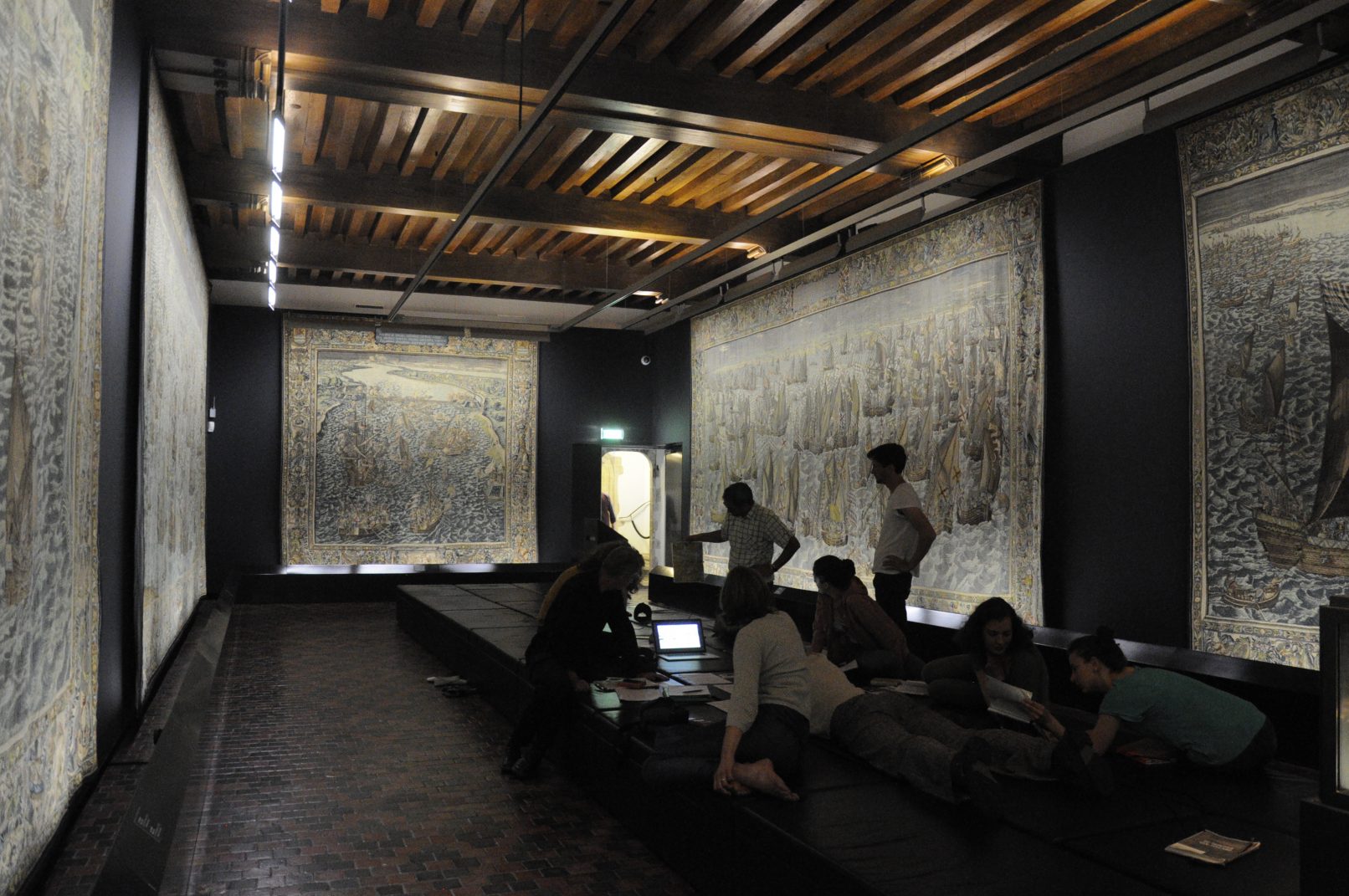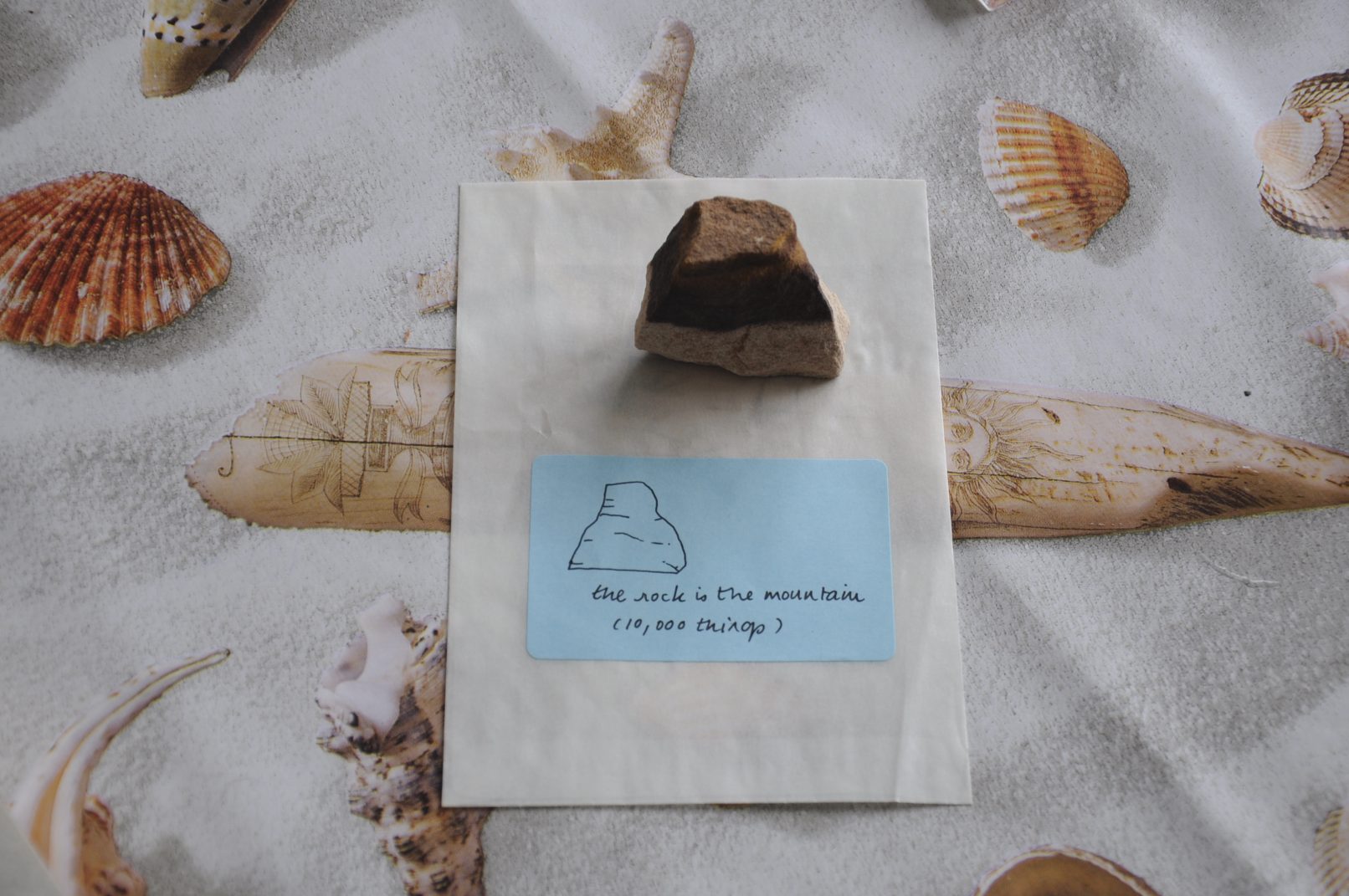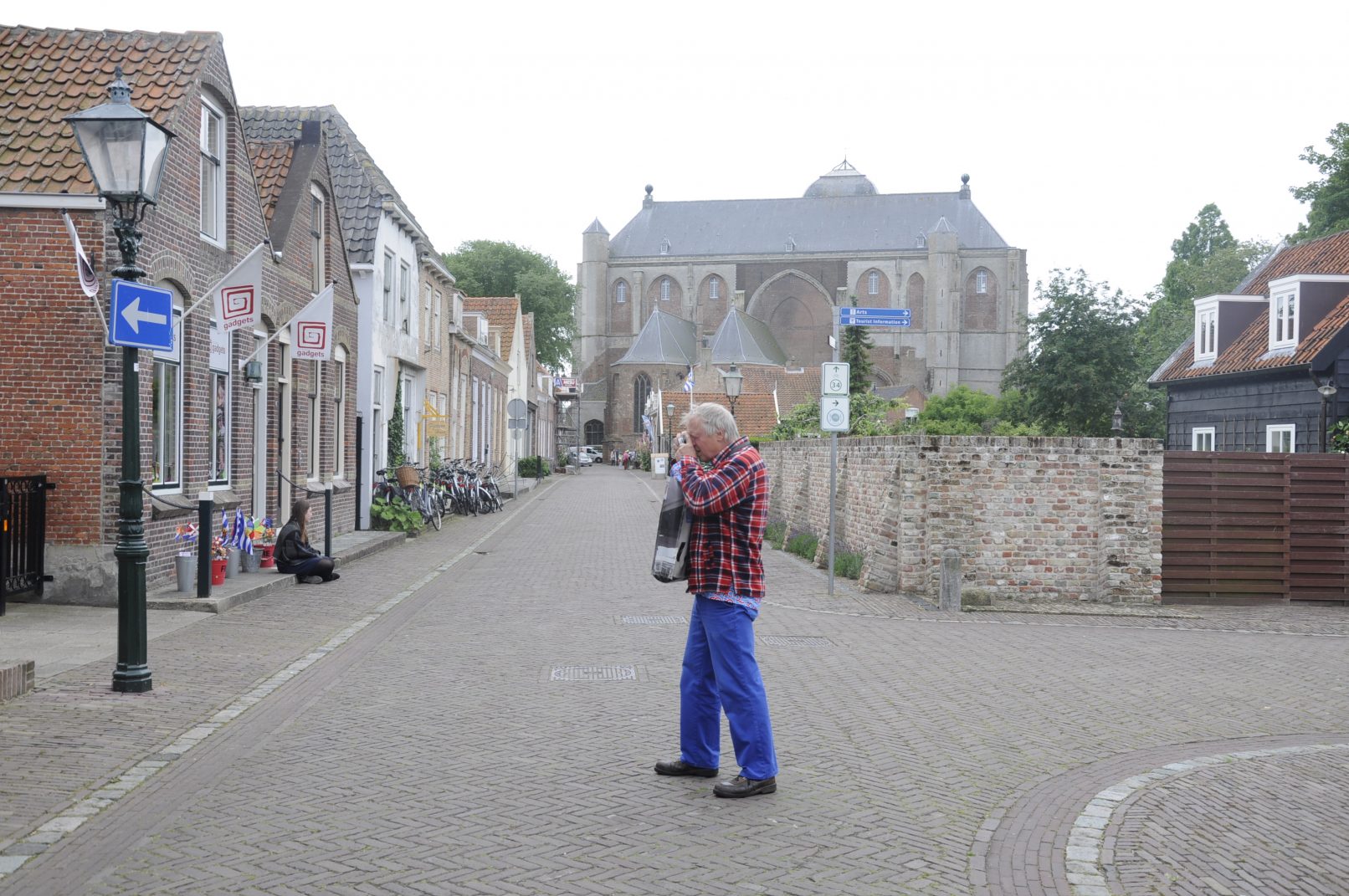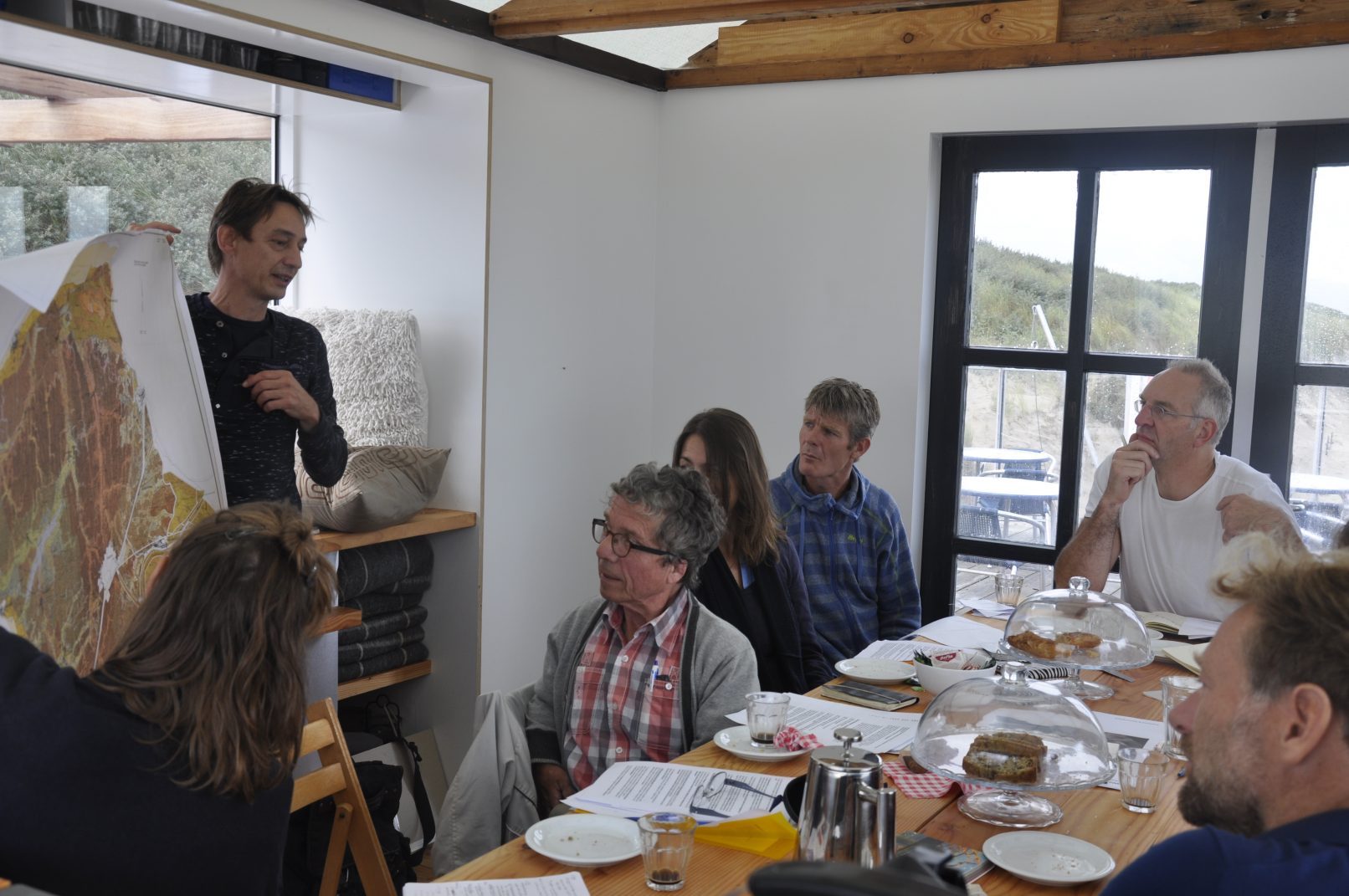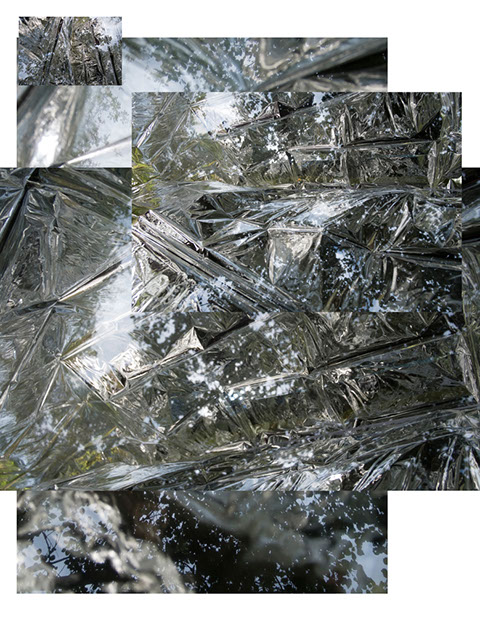How to think like a mountain
In July 2016, a group of artists and researchers walked, observed, discussed, cooked, drew, biked, and produced new work on the peninsula of Walcheren. Various fields of work were represented within the group: visual arts, photography, writing, urban geography, molecular medicine, industrial design, public space and urban planning. The challenge of the first two days was to explore the surroundings of Dishoek as tourists.
We did this in an effort to break open our assumptions about who tourists are, and what they want. Sitting still, speaking out loud, listening, watching, or drifting, each participant developed a tactic of his or her own, and in doing so, encountered a different Dishoek. Afterwards, we matched historic artefacts and stories with each inventory. The choice to first do, and then reflect, was a conscious one: we wanted to dig up diamonds of the past through the lens of how we perceive Walcheren here and now – including atypical ingredients like oil tankers. We categorised the inventories starting from the ones investigating the peninsula, moving seawards.
In Veere, we hosted a public talk in a former school building. We talked about the relation between imagination and resilience, made drawings about how to deal with the new stuff when you want to keep the old stuff, and wondered what would happen if you would stop mowing the grass so often. Clearly, Veere’s greatest asset is its small size in combination with the vast surrounding landscape. Can we help Veere on it’s way to become the first landscape-city of the Nertherlands?
Finally, the group distilled new research questions from all the above, and put these to the test during a reflection day on the edge of nature reserve Oranjezon in Vrouwenpolder, co-facilitated with Manon Berendse; the published outcome takes the form of a tentative research agenda for the future of Walcheren, illustrated with best practices. The publication launch took place in partnership with ZB| Bibliotheek & Planbureau van Zeeland & architect / visionary Thomas Rau. A radio talk with FM Walcheren grounded the imaginaries.
Visit the dedicated website for full credits, background information.
Download the publication.
By nature, the observations and ideas presented in the publication are fragmentary and their meaning is not always easy to grasp. However, I am convinced that they can function as seeds of new ways of thinking about Walcheren. There is much fruitful common ground to reclaim, mid way between artistic autonomy, scientific research, education and good governance.– Sophie Krier
Participants & guest speakers summer school: Joost Bakker (Galerie Viergemeten), Manon Berendse, Oliver Barstow, Kristina Benjocki, Krijn Christiaansen (KCCM), Yeşim Erol, Kathrin Ginsberg (CBK Zeeland), Paola-Leenhouts Gonzalez, Juliana Holanda Hobomo, Ad van der Koog, John Körmeling, Tracy Metz, Cathelijne Montens (KCCM), Alan Murray & Dorine Zelders (Zeeuws Museum)
Participants expert meeting: René Dekker (tourism policy, gemeente Veere), Piet Dieleman (artist, chairman Stichting IK), Inez Flameling (marine biologist, UCR professor), Veronika Frenks (researcher, publicist), Guido Krijger (nature coach), Ro Koster & Timko Lokerse (sustainable architecture), Bernard Meijlink (Walcherse Archeologische Dienst, archeological service of Walcheren), René Molenaar (alderman of Veere), Cathelijne Montens (public space designer, guest lecturer summer school), Ger Rijkers (UCR Head of Science Department), Jos Willemsen (sustainable landscape design)
